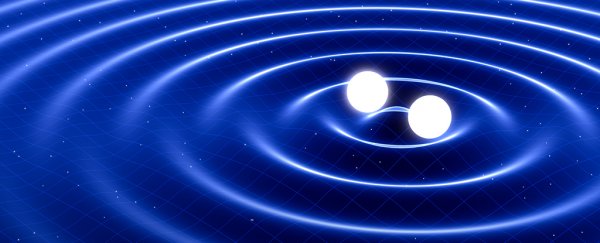Gravitational waves are disturbances travelling at the speed of light through spacetime – caused by accelerating mass.
You can think of them as ripples in the fabric of the Universe produced by heavy objects changing speed.
When were gravitational waves discovered?
The first person to come up with such an idea was the French mathematician Henri Poincaré, who in 1905 suggested accelerating masses must send waves of energy through gravity fields in the same way accelerating charges send energy waves through electromagnetic fields.
Albert Einstein used his general theory of relativity in an attempt to predict how such waves might behave, yet remained skeptical. It took many years for physicists to iron out the details and determine whether gravitational waves could in fact exist.
By the late 1950s, it was generally accepted that such ripples in spacetime not only existed, but they carried enough energy to effectively make things move, meaning they could theoretically be detected. But that's harder than it sounds.
How do we detect gravitational waves?
The Laser Interferometer Gravitational-Wave Observatory (LIGO) operated by Caltech and MIT in the US was the first to officially detect gravitational waves on September 14, 2015.
It took that long, because by the time these gravitational waves reached us, they were tiny echoes of the event that send them into the Universe.
Where do gravitational waves come from?
The ripples LIGO measured represented the final moments of two black holes 1.3 billion light years away swirling together and merging into a single object with a mass 62 times that of our Sun.
LIGO accomplished this feat by lining up lasers so that they could detect changes in the shape of spacetime as small as one ten thousandth the diameter of a proton.
All topic-based articles are determined by fact checkers to be correct and relevant at the time of publishing. Text and images may be altered, removed, or added to as an editorial decision to keep information current.
